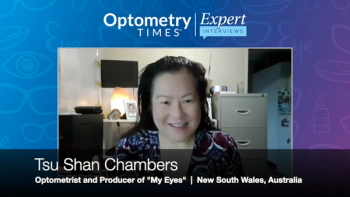
Safety and efficacy of myopia progression therapies in children
Meta-analysis investigates multiple myopa management interventions vs control conditions.
The desire to control myopia progression in children has been around for quite a long time. For good reason: the prevalence of myopia is increasing and many visual and pathological complications come from high myopia. There are many interventions designed to inhibit myopia progression. But of the therapies at our disposal, are some better than others? It is an important question to answer for both ourselves and our patients.
Meta analysis
A recent study published in BMC Ophthalmology addressed that very question.1 Researchers from Greece and the United Kingdom performed a synthesis of systematic reviews and meta-analyses of published literature investigating the efficacy and safety of multiple myopia interventions vs control conditions. Their target was myopic children and adolescents less than 18 years of age without ocular comorbidities, including strabismus and amblyopia.
Primary outcome measures regarded myopia progression as a mean change in refractive error measured in diopters and axial elongation measured in millimeters. The outcomes assessed included change in refractive error and change in axial length from baseline to one year and from baseline to two years.
Forty-four unique primary studies contained in 18 eligible reviews published between 2002 and 2017 involving 6400 children were included in the analysis. Of the 18 studies, four studies investigated atropine, four analyzed orthokeratology, two focused on outdoors exposure, one examined the efficacy of acupuncture, and two investigated the use of multifocal lenses. The remaining five examined multiple interventions for myopia control.
Atropine more effective
The findings of this study suggests atropine eyedrops appear to be more effective for myopia control compared to spectacles or contact lenses. Their findings mirror the consensus published by the World Society of Pediatric Ophthalmology and Strabismus (WSPOS), which reported that atropine is the most beneficial intervention for myopia progression control.2 The findings from this study showed no dose dependence and no difference in the efficacy of atropine across different doses in the range of 0.01% to 1%. However, the five-year results from the Atropine in the Treatment Of Myopia (ATOM2) study supported binocular daily application of 0.01% atropine as the safest and most effective concentration for restricting myopia.3
Ortho-k shows efficacy
Orthokeratology also demonstrated effectiveness in retarding myopia development compared to other types of lenses, but orthokeratology side effects have resulted in this treatment presenting higher dropout rates compared to other myopia interventions.4 Peripheral add multifocal contact lenses also appear to be effective, showing no refractive changes in a year and has a low reported risk for infectious keratitis.
Time outdoors
Increased outdoor exposure is yet another myopia-controlling intervention for which the mechanism of action has not been clarified. A systematic review and meta-analysis analyzing up-to-date evidence showed outdoor exposure appears to provide protection from myopia onset in non-myopes but does not result in restriction of myopia progression in already myopic individuals, according to one study.5
On the other hand, a randomized controlled trial reported a beneficial effect of outdoor exposure in both nonmyopic and myopic individuals.6
Refractive error undercorrection
Under correcting the full refractive error has been used with debatable results. One study showed that full correction reduces progression of myopia compared to under correction over a two-year period of treatment.7 But a more recent study on 121 Chinese children proposed that no correction at all was effective in slowing myopic progression and axial elongation compared to prescribing the full correction.8
Summing up
The data from this review suggests atropine followed by orthokeratology and multifocal soft contact lenses demonstrate efficacy in controlling myopic progression. It remains unclear if atropine or orthokeratology could lead to a permanent longterm effect on myopia control. Possible rebound effects upon treatment cessation also need to be assessed.
This review can give practicing optometrists insight in treating patients seeking myopia progression control. The topic is going to gain even more attention in the future, so it is in everyone’s best interests to be aware of available therapies.
Newsletter
Want more insights like this? Subscribe to Optometry Times and get clinical pearls and practice tips delivered straight to your inbox.













































.png)


